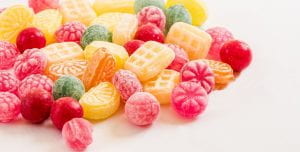Which is which?
A mixture is created when two or more different substances are physically combined and can be separated back into its original substances.
Examples of mixtures are:
a bowl of different kinds of candy, a pile of different kinds of leaves, steel, sugar syrup
There are two types of mixtures

Source: Photo by Ylanite Koppens from Pexels
- heterogeneous mixtures look like their distinct components (a bowl of different kinds of candy or a pile of different kinds of leaves can be sorted into groups consisting of the same type of candy or leaves)
- homogeneous mixtures look like only one component (metal alloys are usually made of a metal and non-metallic substance—steel is made from iron and carbon, sugar syrup is made from a solution of sugar in water)
A chemical reaction occurs when two or more substances are combined to form a new substance and cannot be separated back into its original substances.
Examples of chemical reactions are:
baking a cake (its combination of different ingredients combines, with heat impact, to make something new) or breaking a glow stick (the chemicals combine to create light)
We can observe a chemical reaction is occurring because the substances
- change color
- give off a smell
- change physical state (liquid to gas or liquid to solids)
- create or take away heat
- emit light
Bath Bombs
Bath bombs contain citric acid and sodium bicarbonate.
When bath bombs are added to water, a chemical reaction occurs to produce sodium citrate, carbon dioxide, and water.

Observe the bath bombs before adding water. What does it look like? Feel like? How does it behave? After adding water, take the same observations.
Materials
Makes 12 mini muffin-sized bath bombs
- 1 C baking soda
- 1/2 C citric acid
- 1/2 C corn starch
- ½–1 C Epsom salts
- 1–2 Tbs. water
- 1–2 Tbs. melted coconut oil
- essential oils (optional)
- 3–4 drops food coloring (optional)
- mica powder and polysorbate (optional)
- a small bouncy ball or toy to put as a surprise in the bath bomb (optional)
Instructions
- Mix baking soda, citric acid, cornstarch, and Epsom salt in a glass bowl.
- In a separate bowl, mix water, coconut oil, and any of the optional materials.
- Slowly add the liquid mixture to the solid mixture until the solid mixture feels like damp sand and holds its shape.
- If using a bouncy ball or toy, place it in the bottom of each mold (muffin tins or paper cups work well) and cover with bath bomb mixture.
- Pack bath bomb mixture in mold, and (if using) around the bouncy ball or toy.
- Let the bath bombs dry in their molds for at least 24 hours.
- Add a bath bomb to your bath water and watch the chemical reaction happen!
For more information on chemical reactions, check out:
https://billnye.com/the-science-guy/chemical-reactions
https://www.youtube.com/watch?v=37pir0ej_SE
For more information on bath bombs, check out:
https://breagettingfit.com/diy-eyeball-bath-bombs/
https://www.diynatural.com/spinning-bath-bombs/
UD Connection
Learning about chemical reactions is just one part of Chemical Engineering. Many of the researchers at UD use their knowledge of chemistry to do things like develop new ways of delivering medicine to the human body. Dr. Millie Sullivan is one of our Chemical Engineering faculty who works on medicine delivery, tissue engineering and more.
©2020 UD K-12 Engineering

